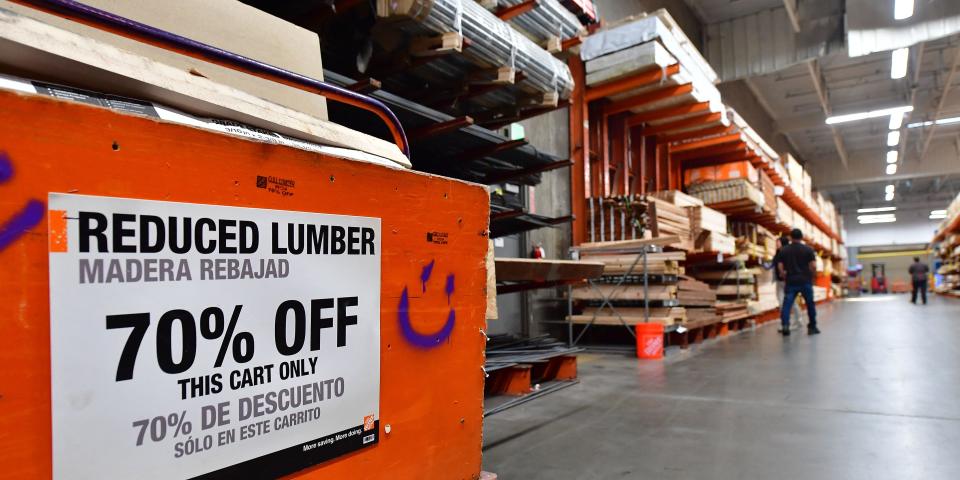Lumber falls to a new 2022 low after homebuilder sentiment drops for the 12th month in a row

Lumber prices fell 4% to a new 2022 low on Monday as the commodity ends a losing year.
The latest decline in lumber prices came after homebuilder sentiment fell for the 12th month in a row.
A swift doubling in mortgage rates to as high as 7% put the housing market on edge this year.
Lumber prices extended their six-day losing streak on Monday after homebuilder sentiment fell for the 12th month in a row.
Lumber futures dropped as much as 4% to $370.40 per thousand board feet, representing a fresh low for 2022 and its lowest level since June 2020.
The essential building commodity is now down 68% year-to-date and is off 79% from its record high reached in May 2021, when strong demand for homes was compounded by supply chain issues.
The weakness in lumber largely stems from this year's deceleration seen in all facets of the housing market, as soaring mortgage rates helped slow down sales, rein in home price growth, and put a serious dent in homebuilder confidence.
The National Association of Home Builders/Wells Fargo Housing Market Index dropped two points to 31 in December, its lowest level since 2012 with the exception of the onset of the COVID-19 pandemic in 2020.
To combat the downturn, 62% of homebuilders are using incentives to help boost sales, according to the survey. But based on sales data, consumers still remain hesitant to pull the trigger on a home purchase.
The average 30-year mortgage rate currently sits at 6.3% according to data from Freddie Mac, which is off the recent high of 7.08%, but still about double the levels seen at the start of the year.
The surge in mortgage rates decreased the affordability for new home buyers, which led to a significant slowdown in existing home sales. That's why any reversal in this year's sharp uptick in interest rates could have a strong effect in shoring up confidence in the US housing market.
In October, existing home sales fell 6% month-over-month, marking the ninth straight monthly decline, with sales down 28% year-over-year. And according to the Case-Shiller US National Home Price Index, home price growth decelerated for the sixth straight month in 2022.
All of this has dampened the outlook of US homebuilders, who drive a bulk of the demand for lumber as they embark on new construction projects.
"NAHB is expecting weaker housing conditions to persist in 2023 and we forecast a recovery coming in 2024, given the existing nationwide housing deficit of 1.5 million units and future, lower mortgage rates anticipated with the Fed easing monetary policy in 2024," NAHB chief economist Robert Dietz said.
But it's not all doom and gloom in the housing market, as Dietz did highlight some potential green shoots for the industry.
"The silver lining in this HMI report is that it is the smallest drop in the index in the past six months, indicating that we are possibly nearing the bottom of the cycle for builder sentiment. Mortgage rates are down from above 7% in recent weeks to about 6.3% today, and for the first time since April, builders registered an increase in future sales expectations," Dietz said.
Read the original article on Business Insider

 Yahoo Finance
Yahoo Finance 